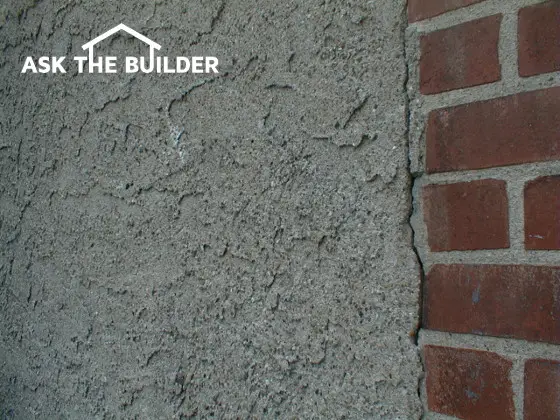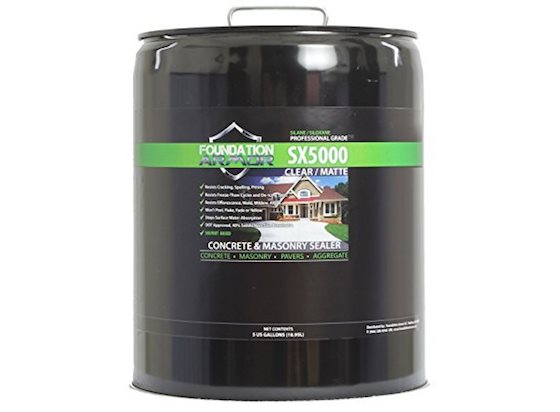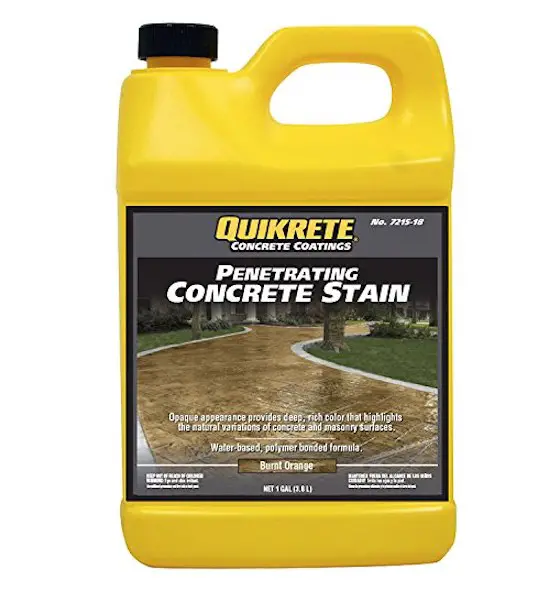Paint Stucco – or Not?

Painting stucco is not necessary. This cement stucco has never been painted. It's decades old and is in great shape. You can extend its life by applying a clear silane-siloxane water repellent. CLICK HERE to have this repellent delivered to your home in days
"Untreated concrete and stucco will readily absorb water. Both will allow water vapor to freely pass through them. You want water to evaporate from concrete and stucco as fast as possible to avoid damage."
Is Painting Stucco Bad? - Well, It's Not What I'd Do!
DEAR TIM: The stucco on my house has been painted many times. There are large areas which are peeling. Concrete, which is virtually maintenance free, seems very similar to stucco. If this is so, does stucco require painting? Are there alternatives to using paint? G. F.
DEAR G. F.: Your observation concerning the similarities of stucco and concrete is right on target. The two materials, for the most part, have very much in common. Concrete usually consists of cement, sand, and varying sizes of aggregate (gravel).
What is Stucco?
Stucco, on the other hand, usually consists of cement, hydrated lime, and sand. When concrete is finished, its surface and that of stucco are virtually the same.
However, there is a big difference. In a majority of residential applications, concrete is applied in contact with the ground. Stucco is applied to the sides of many houses in lieu of brick, stone, siding, or similar weather shielding material.
Related Links
Stucco Repair Products - Get the Super Epoxy - DO NOT SHARE - SECRET PROCESS!
Apply Stucco Like a Pro - You Can Do It!
Does Stucco Absorb Water?
Untreated concrete and stucco will readily absorb water. Both will allow water vapor to freely pass through them. You want water to evaporate from concrete and stucco as fast as possible to avoid damage.
Do you see where I am headed with this one?
Free & Fast Bids
CLICK HERE to get FREE & FAST BIDS from local painters who can paint or stain your exterior walls.
What Happens If Stucco Stays Wet?
If a concrete sidewalk or driveway gets wet, it's no big deal. However, if stucco gets wet for extended periods of time, this moisture can cause problems. Water may eventually wick through the stucco and begin to rot the wood sheathing or wood framing members. Water vapor may be pulled into the house.
What Happens if Water Leaks Through Stucco?
This may cause the insulation to become wet, drywall or plaster to crumble, and interior paint to peel. Stucco should have a protective coating of some type to prevent interior or structural problems to your home. 50 years ago, the only material available to readily protect the stucco was paint.
Why is Painting Stucco a Bad Idea?
Paint is a coating. Because of its viscosity, it does not readily penetrate things that it covers.
Paint will peel over time. That's why you are experiencing the peeling problems. Water vapor from the inside of your house may be pushing the paint off of the stucco. This is a very common problem on thousands of houses.
Can You Add Color to Stucco?
Yes, you can add dry pigments to cement stucco just like pigment is added to paint. You can tint stucco any color you want.
Can You Spray a Clear Water Repellent on Stucco?
Yes, there are great clear silane-siloxane water repellents for cement stucco. These are the same products recommended for concrete slabs on grade.

This is a magnificent silane-siloxane water repellent that soaks into concrete or stucco. CLICK HERE to have it delivered to your home in days.
Are There Great Products That Don't Peel?
Fortunately, advancements in coatings technology have produced products which will enable you to avoid peeling in the future. If you're able to remove the paint from your stucco completely, or had it never been painted before, you would have two alternatives. The choices available to you are either penetrating masonry stains or clear penetrating finishes.

This is a great penetrating stain that will protect stucco. You can buy it in lots of different colors. It will NOT peel. CLICK HERE or THE IMAGE now to have it delivered to your home.
These products are extremely effective, because they take advantage of the microscopic makeup of concrete and stucco. Stucco and concrete look very much alike under a microscope.
Are There Small Spaces in Stucco?
The space between the aggregate (sand and gravel) is comprised of interlocking crystals. The crystals have void spaces between the interlocking needles of each crystal.
If you were small enough to climb through the spaces you could travel from one side of the stucco to the other without much difficulty.
How Do the Stains and Water Repellents Work?
The penetrating finishes take advantage of these void spaces. The liquid nature of these products allows them to penetrate into the crystalline matrix. After the liquid portion of the product evaporates, the small solid parts are left behind to partially plug up the void spaces.
Some of the products are designed that they will not allow liquid water molecules to pass by, however, water vapor can readily pass through. This is an advantage, in the event water vapor from the inside of your house is trying to get to the outside air.
I recommend that you give serious consideration to these products, as you prepare to recoat your peeling stucco. You will not be disappointed.
CLICK HERE to get FREE & FAST BIDS from local painters who can paint or stain your exterior walls.
Column 043


6 Responses to Paint Stucco – or Not?